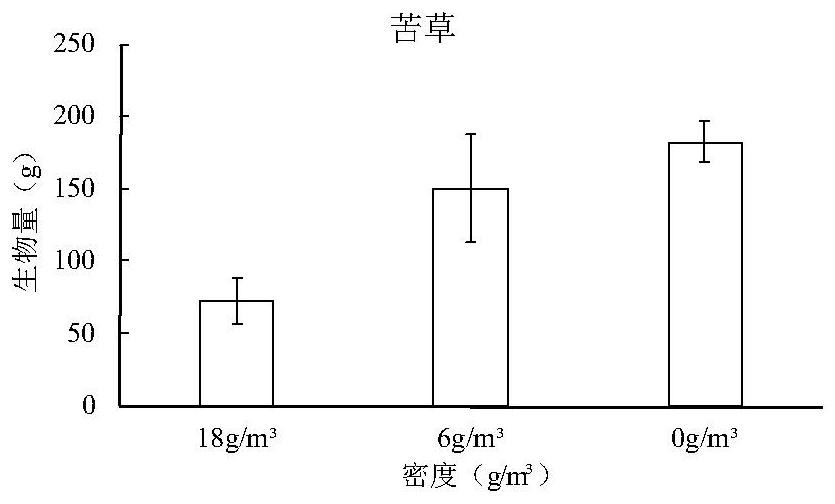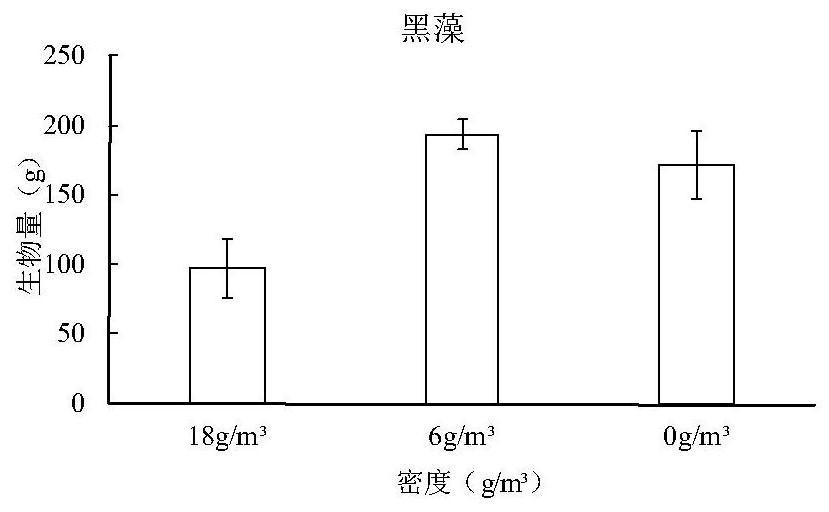A biomanipulation method for lake ecosystems to promote the stability of submerged plant communities
A technology for submerged plants and ecosystems, applied in the field of biomanipulation of lake ecosystems to promote the stability of submerged plant communities, can solve problems such as ecological restoration failure, water quality deterioration, and unavoidable problems, to improve water quality, promote expansion and recovery, low cost effect
- Summary
- Abstract
- Description
- Claims
- Application Information
AI Technical Summary
Problems solved by technology
Method used
Image
Examples
Embodiment 1
[0034] The outdoor controlled experiment was carried out at the Taihu Lake Ecosystem Research Station of the Chinese Academy of Sciences for a period of 30 days. The density of crucian carp was the only influencing factor in the experiment. There were a total of 12 experimental barrels in the experiment. Before the experiment, 10 cm thick sediment was added to the barrel. The sediment came from Taihu Lake and was used after removing impurities and mixing. The submerged plants used in the experiment were two kinds of bitter grass and black algae. The seedlings of bitter grass and black algae with the same body shape and height were selected and cultivated for one week, and then planted in the experimental bucket. 12 plants of bitter grass (40g) and black algae were planted at even intervals in each bucket. Algae (12g), the experimental barrel was injected with filtered Taihu Lake water, and the crucian carp was put in after the overlying water of the experiment was clarified and...
Embodiment 2
[0039]Taizhou Qinhu Lake ecological restoration demonstration water area, the demonstration project area is 80,000 square meters, construction began in May 2011, the main ecological restoration measures are planting submerged plants and removing benthic fish, and the ecological restoration construction was completed in June. From May to October, the first anniversary of the completion of ecological restoration construction, investigate the coverage of submerged plants in Qinhu Lake and the number of dominant species of submerged plants. During the period, fish were caught at the sampling point, and the species identification and weight determination of the caught fish were carried out. There were two sampling points, one of which was set when the biomass of the submerged plants exceeded 500 g / m 2 In the area, another sampling point is set where the biomass of submerged plants is lower than 50 g / m 2 In the area, the species identification and weight determination of the fish ca...
Embodiment 3
[0044] The ecological restoration demonstration project of Wuli Lake in Wuxi, with an area of 50,000 square meters, started construction in May 2010. In July, the water body was turbid, with a transparency of 45cm. At that time, the coverage of submerged plants was less than 40%, and there were 2 dominant species, while the biomass of carp and crucian fish reached 8g / m 3 , carry out carp crucian carp reduction to 3g / m 3 . Immediately, bottom dwelling fish reduction was implemented, and 90% of the catches were carp and crucian carp (about 60% of which was crucian carp). After 12 days after the end of the fish reduction, the transparency of the water body improved to more than 90 cm, and the water quality was good.
[0045] In May of the second year, the observation found that the coverage of submerged plants was 50%, the dominant species were 3 species, and the biomass of carp and crucian fish was 7g / m 3 , the transparency is 70cm, and then the carp and crucian carp are cut...
PUM
| Property | Measurement | Unit |
|---|---|---|
| density | aaaaa | aaaaa |
| density | aaaaa | aaaaa |
| transparency | aaaaa | aaaaa |
Abstract
Description
Claims
Application Information
 Login to View More
Login to View More - R&D
- Intellectual Property
- Life Sciences
- Materials
- Tech Scout
- Unparalleled Data Quality
- Higher Quality Content
- 60% Fewer Hallucinations
Browse by: Latest US Patents, China's latest patents, Technical Efficacy Thesaurus, Application Domain, Technology Topic, Popular Technical Reports.
© 2025 PatSnap. All rights reserved.Legal|Privacy policy|Modern Slavery Act Transparency Statement|Sitemap|About US| Contact US: help@patsnap.com



